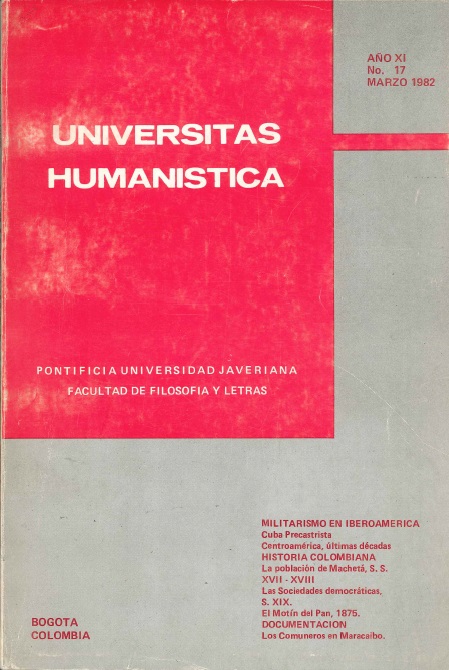Resumo
En el presente trabajo se analiza la influencia de los Estados Unidos de Norteamérica en el desarrollo de las fuerzas militares de los distintos países de la América Central durante los últimos veinte años. El autor inicia su estudio con una breve alusión a la influencia norteamericana durante la primera mitad del siglo XX para centrar toda su atención en el variado proceso que se inicia en el intento de invasión a Cuba en 1961 y se extiende hasta el momento presente. El estudio presta particular atención a la actitud asumida por las administraciones de los presidentes Cárter y Reagan frente a los militares de la región centroamericana. El autor considera que los resultados del influjo militar norteamericano en Centroamérica, desde todo punto de vista, es muy poco satisfactorio.

A revista Universitas Humanística encontra-se registada sob a licencia Creative Commons Versão 4.0 Internacional. Portanto, esta obra pode se reproduzir, distribuir e comunicar publicamente em formato digital, sempre que dado o crédito apropriado para os autores e a Pontificia Universidad Javeriana. Permite-se citar, adaptar, remixar, transformar, autoarquivar, republicar e criar a partir do material, para qualquer fim, mesmo que comercial, sempre que indicado apropriadamente o nome do criador, provido um link para a obra original e indicado se mudanças foram feitas. A Pontificia Universidad Javeriana não retém os direitos sobre as obras publicadas e os conteúdos são responsabilidade exclusiva dos autores, os quais conservam seus direitos morais, intelectuais, de privacidade e publicidade.
O aval sobre a intervenção da obra (revisão, correção, edição, tradução, formatação) e a subsequente difusão disponibiliza-se através de licença de uso e não através de transmissão de direitos, o que representa que a revista e a Pontificia Universidad Javeriana são isentas de qualquer responsabilidade que puder se derivar de uma prática ética pobre por parte dos autores. Em consequência da proteção fornecida pela licença de uso, a revista não fica na obrigação de publicar retratações ou alterar informações já publicadas, a não ser que a errata seja decorrente do processo de gestão editorial. A publicação de conteúdos nesta revista não representa royalties para os contribuintes.


